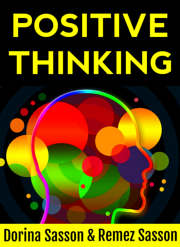
The world of child counseling is vast, multifaceted, and requires a tender touch. You may have heard of child counseling, but do you fully grasp its depths?
Child counseling is a specialized field focusing on young individuals facing challenges with their emotions or behavior. It ranges from children coping with catastrophic events to simply providing tools for optimal growth and development.
Importance of Topic
Browse our online courses on meditation, positive thinking, overcoming procrastination, confidence, and freedom from distractions.
As a society, you acknowledge the necessity for such a field due to your inherent desire to see every child flourish.
Addressing children’s mental health may not only shape the trajectory of an individual child’s life but can foster societal progress in ways you might not even envision now.
Critical Role of Counselors
Counselors are critical in this realm as they guide your young ones through their exploring journey. They make use of play and communication to reach out and understand what’s going on in the little one’s universes.
Given the gravity, intuition must be honed by professionals from services such as Olympic Mental Health to understand these young hearts and minds intuitively.
The Realm of Child Counseling
Child counseling involves therapeutic techniques designed specifically for children experiencing emotional or behavioral issues.
Think of it as a safe haven where children can express themselves without judgment while gaining useful skills to navigate life.
Challenges in Child Counseling
Within this intricate realm, challenges abound. Identifying behavioral issues as mere growing pains or signs of deeper problems can be likened to walking on a tightrope. It requires insight, understanding, and a keen eye for detail.
The Art of Letting Go
Letting go – it sounds simple yet is so powerful when applied efficiently.
The art of letting go refers to releasing all negative emotions that hold back your loved ones from becoming the best versions of themselves – empowering them with lifelong skills that promote emotional resilience.
Overcoming Communication Barriers
The communication barrier is another significant hurdle. Getting children to open up about their feelings is no easy feat, given their limited vocabulary and understanding when it comes to expressing their worries or anxieties.
Techniques and Approaches Used
There are different therapeutic techniques used in child counseling. Play therapy remains at the forefront because it forms an essential part of a child’s life – providing them with an accessible means to communicate their emotions, fears, and hopes.
Cognitive Behavioral Techniques
Cognitive-behavioral therapy allows the counselors to help your child replace destructive thought patterns with constructive ones, promoting healthier reactions to various situations.
Tools for Effective Letting Go
Bridging both realms requires effective tools commencing with acknowledging the present emotions – fostering emotional awareness among children and creating an essential foundation for further work to transpire successfully.
Such tools as quotes for letting go can help with forgiveness and other emotions.
Art Therapy in Counseling
Your little ones may struggle with verbalizing their fears or worries. This is where art therapy comes into play.
Drawing, painting, or sculpting often helps them project complex feelings onto symbols, which allows them profound expression through creativity.
Benefits of Art Therapy
This technique often leads to many benefits, including enhancing self-esteem, relieving stress, and giving insights that might’ve stayed hidden otherwise.
Link with Child Counseling
In terms of child counseling, letting go acts as a catalyst towards better healing processes, encouraging optimal mental health along the way while playing an instrumental role in transforming lives positively.
Aiding Transformation Journey
Here, it is about not just reading signals from your kids but also creating trustful relationships, giving them space where they feel heard, accepted, and, most importantly, understood by actively listening.
Promoting Self-Love and Forgiveness
Also significant are self-love and forgiveness – two timeless values that emerge through the letting go process, enabling your kids to embrace themselves fully, realizing they are enough just as they are instead of holding onto unfavorable past experiences.
The Role of Parents and Caregivers
Parents or caregivers have undoubtedly played a significant role since day one – their optimism and patience can be infectious, aiding in healing processes subtly but surely.
Advocating for Healthier Environments
Also, parents act as advocates, ensuring constant supervision while providing healthier environments and encouraging positive behaviors amongst children, limiting potential growth hindrances effectively.
Boosting Confidence and Resilience
Developing confidence gradually uncovers their resilience – an integral part that accelerates personality growth immensely.
Looking Towards a Brighter Future
As these strategies come into play, systematically tackling minor obstacles one by one, you start observing positive changes significantly – a balanced approach toward handling emotions followed by increased happiness and success becoming apparent markers here.
Lasting Impact on Society
It changes individual lives drastically and indirectly forms a more aware society, paving the way for increased well-being holistically, forming tight-knit communities sustaining human life over long stretches beautifully.
Inspiring Action Moving Forward
Hence, moving forward becomes all about turning knowledge into understanding and further into action.
Rightly applying learned lessons towards every unique case, fostering mental well-being amongst growing hearts, and contributing positively towards society at large. Also, harnessing true power latent within our communities – one action step at a time.
Reflecting on Key Notes
This reveals quite clearly how intertwined these areas are – each having their significance existing harmoniously within this delicate ecosystem, directly affecting youthful lives.


